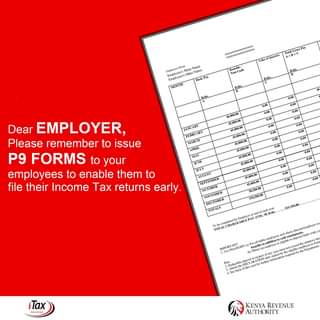If you’re an employee in Kenya, filing tax returns using a P9 form is essential. However, many people find it confusing and time-consuming. Here are some key points to help you understand how to file returns using a P9 form:
- Filing returns using P9 forms is mandatory for all employees in Kenya and must be done by June 30th each year. Failure to file on time attracts a penalty of 5% of the tax due or Ksh. 20,000.
- A P9 form is a tax-deduction form that employers issue to their employees. It contains employees’ basic salary, benefits, allowances, pension contributions, gross pay, tax charges, and personal relief for the whole year.
- To file returns using a P9 form, you need to log in to your iTax account on the KRA website, select your tax obligations, download the Income Tax Resident Individual form, fill in the relevant tabs, validate the data, upload the form, and download the KRA eReturn Acknowledgment Receipt.
- If you are unemployed and have no source of income, you can file Nil Returns to avoid penalties. To do this, you need to log in to your iTax account, select the Returns menu, choose File Nil Returns, select your type of taxation and tax obligation, enter your details and the return period, complete the form, and submit it. You will then need to download the acknowledgment receipt.
- Finally, it’s worth noting that a negative figure on your KRA returns means that you are due for a refund from KRA, while a positive figure means you owe KRA and need to pay.
In summary, it’s important to learn how to file returns using a P9 form if you’re an employee in Kenya. It’s also crucial to file Nil Returns if you’re unemployed. By following the steps outlined above, you can ensure that you file your returns accurately and avoid penalties.
Advertisement











